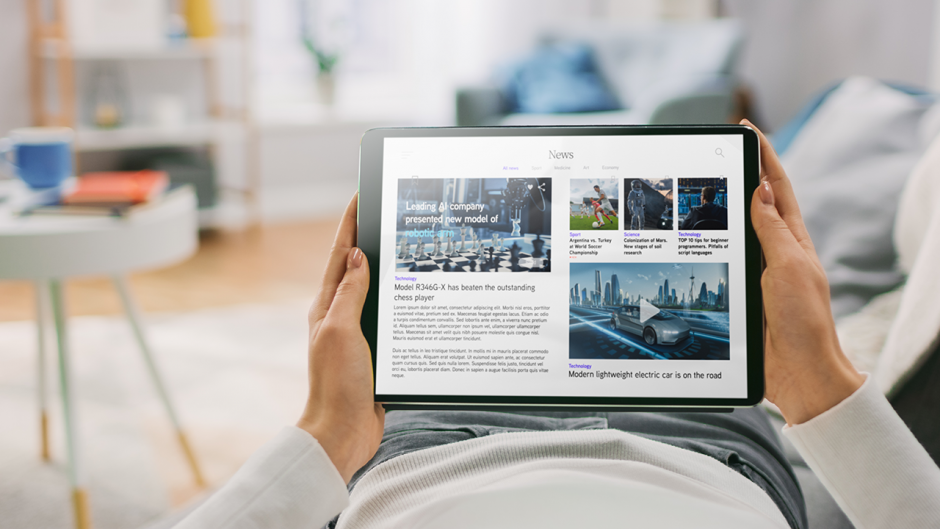
Nov. 11, 2021
Contact: Eric Stann, 573-882-3346, StannE@missouri.edu

Digital news subscriptions have doubled in the past four years, but half of those gains went to the New York Times and the Washington Post alone. To find out why, researchers at the University of Missouri School of Journalism explored the way people understand and make sense of and value the news they read on digital sites.
To answer that question, researchers sought to understand how news is traditionally produced and presented in print and how digital news readers adapt with changing needs and expectations, said Damon Kiesow, a professor of journalism professions and lead author on the study.
“While our study and its findings highlight some dissatisfaction with the current user experience on digital news sites, we believe this research can help inform news producers of the challenges they face when connecting with readers, and offer improvements for business and design choices that emphasize the user experience,” Kiesow said.
The findings of the study support the researchers’ belief that print newspapers moved to digital platforms without having a proper understanding of the different characteristics of the print and digital mediums, and how readers use contextual clues to help them make sense of the news. The study used psychologist James Gibson’s theory of “affordances,” which argues an object’s properties inform what desired actions might be taken with the object.
“When we apply this theory to a news medium, we are saying that each medium offers a lot of cues, such as design elements like color and use of hyperlinks,” said Shuhua Zhou, a professor of journalism studies and co-author on the study. “These attributes have the ability to allow people to do something or invite people to learn something particular about the news.”
By conducting in-depth interviews over a two-week period with 12 digital news readers, the researchers were able to identify eight affordances of digital news readers. They are:
- Genre, or use of digital cues, such as labels, to distinguish between different types of content and to help lessen the confusion between news stories and opinion pieces.
- Retrievability, or the ability to find previous news stories, such as with a simple keyword search.
- Importance, or visual cues such as a story’s location, headline size and word count, that allow readers to understand the level of importance of a particular news story.
- Immediacy, or the ability for content to be updated quickly and to help lessen the confusion between new and old stories when sharing on social media.
- Hypertextuality, or the ability to include additional digital information by linking to related articles or resources.
- Convenience, or the ability to access vast amounts of digital information at one’s fingertips.
- Adaptability, or user-friendly features that make it easier for one to navigate through digital news content and be able to read the news on multiple digital platforms.
- Interactivity, or the ability to share news articles with others, and create a community by interacting with comments left on an article.

“When these cues are missing or ambiguous, it can lead to reader confusion,” Kiesow said. “For example, readers may believe an opinion column is a news story, or assume an old article shared on social media is actually new. This may contribute to reduced trust and engagement.”
Future steps for this research project include additional experiments and a national survey to better understand and support more user-friendly experiences on digital news sites.
“Affordances for sense-making: exploring their availability for users of online news sites,” was published in Digital Journalism. Lei Guo from the University of Nebraska-Omaha is also an author on this study. Funding was provided by the Donald W. Reynolds Journalism Institute housed at the Missouri School of Journalism. The content is solely the responsibility of the authors and does not necessarily represent the official views of the funding agencies.



